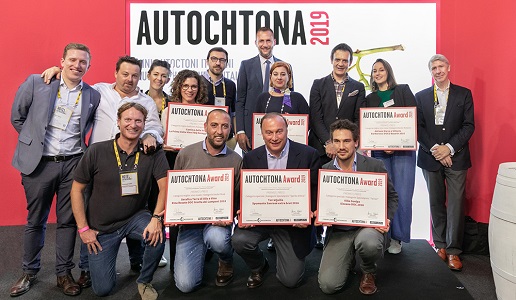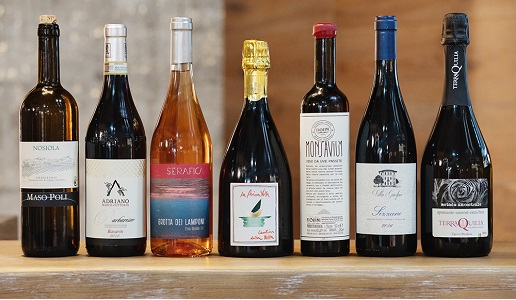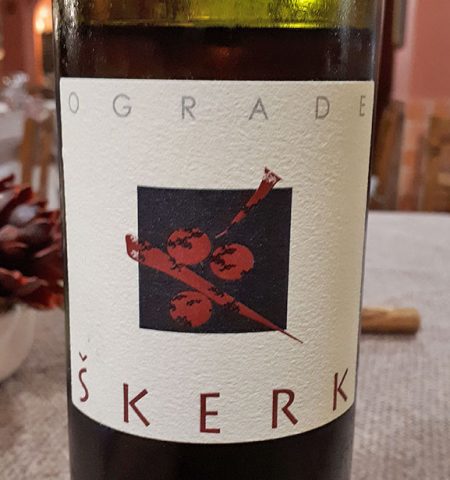Autochtona 2019: from a judge’s point of view

The national trade fair for Italian wines made from native varietals, organized by Fiera di Bolzano, again this year staged a contest for its Autochtona Award.
Nebbiolo, Sangiovese, Aglianico, Negroamaro, Verdicchio and Fiano are just a few of Italy’s many native wine grapes. And just the thought of how many top quality wines they produce is enough to make you head spin. However, they are just a handful of Italy’s immense wealth in different grape varieties, which number in the hundreds and are more than the rest of the world put together. It is a wealth of biodiversity, colors, aromas and flavors of unequalled importance, even if it is relatively unknown and unappreciated worldwide.
In an attempt to remedy this situation, the Fiera di Bolzano trade fair organization has for over 15 years now staged Autochtona, a play on the word autoctono or native-indigenous. It is a national trade fair that seek to draw attention to and enhance the value of native Italian varietals both in Italy and the world. The fair includes a wine contest, the Autochtona Award, for which I have served on the jury.
Being on the jury was a very interesting experience because it allowed me to have a closer look at one of the most dynamic realities on the Italian wine scene and ascertain how it is relatively unknown among the general public and even international trade journalists and critics. For sure, much has changed in recent years: there is a greater awareness and determination among producers, curiosity has risen among consumers and, equally important, among foreign journalists who find themselves faced to deal with native Italian varietals, get to know them and recognize their typicity and value.
However, these does not mean that everything is now good. Such a unique wealth should merit much greater success, be it in regard to the number of producers using them, be it for the institutions that should support and fund initiatives like this one. Make no mistake: the participation of the public at the tasting tables was enormous and the participating producers were happy to oblige. This perhaps because they felt at ease in a format that was not too fancy and not that institutional. And we members of the jury were placed in a perfect position to judge the wines in competition, being also at ease and able to exchange views.
The jury was composed of wine merchants, Italian and foreign journalists and sommeliers. We evaluated almost 100 wines, one per producer, subdivided in the classic five wine contests classifications, to which organizers added two more to underscore the typicity of the contest. As I said, it was very interesting but also a lot of fun because it was unusual to consecutively sample wines that were so different from each other, even if organizers did subdivide them wonderfully, at least in regard to certain flavors and aromas. The average quality level was more than good, with some achieving excellence, especially among the reds. Overall, we tasted typical, well-made wines that were the product of quality winegrowing and winemaking. This was yet a further example that much progress has been made in recent years.
Still this was not enough. Let me explain. As I said earlier, each producer could bring only enter one wine in the contest, one of his choice. We members of the jury, on both the day before the contest and the one after, wore ourselves out at the tasting tables. And, with hindsight, I must say that a certain number of producers decided not to enter their best wines in the contest but another, perhaps because they made the wrong quality choice or perhaps they paid more attention to commercial considerations. For me this was shortsighted and counterproductive and did not contribute helping the overall sector to grow.
In conclusion, I would like to compliment the whole organization: every aspect of the competition, the tasting tables and the hospitality were done with close attention paid to detail. I believe this event has everything it needs to become truly representative of the “native” Italian wine scene. We really need something like this.

The following is the list of contest winners:
* Best White Wine: Trentino Nosiola 2018 Maso Poli
* Best Red Wine: Barbaresco Basarin 2016 Cantina Adriano Marco e Vittorio
* Best Sparkling Wine: Lambrusco di Sorbara La Prima Volta Dosaggio Zero Metodo Classico 2015 Cantina della Volta
* Best Rosé: Grotta dei Lamponi Nerello Mascalese 2018 Serafica Terra di Olio e Vino
* Best Sweet Wine: Bianchello Monsavium 2011 Fiorini
* Special Terroir Prize: Sizzano 2016 Villa Guelpa
* Special Spirit of Wine Prize: Spumante Sanrosé Extra Brut 2016 TerraQuilia (Ancestral Method using Sangiovese grapes)

 Italiano
Italiano








